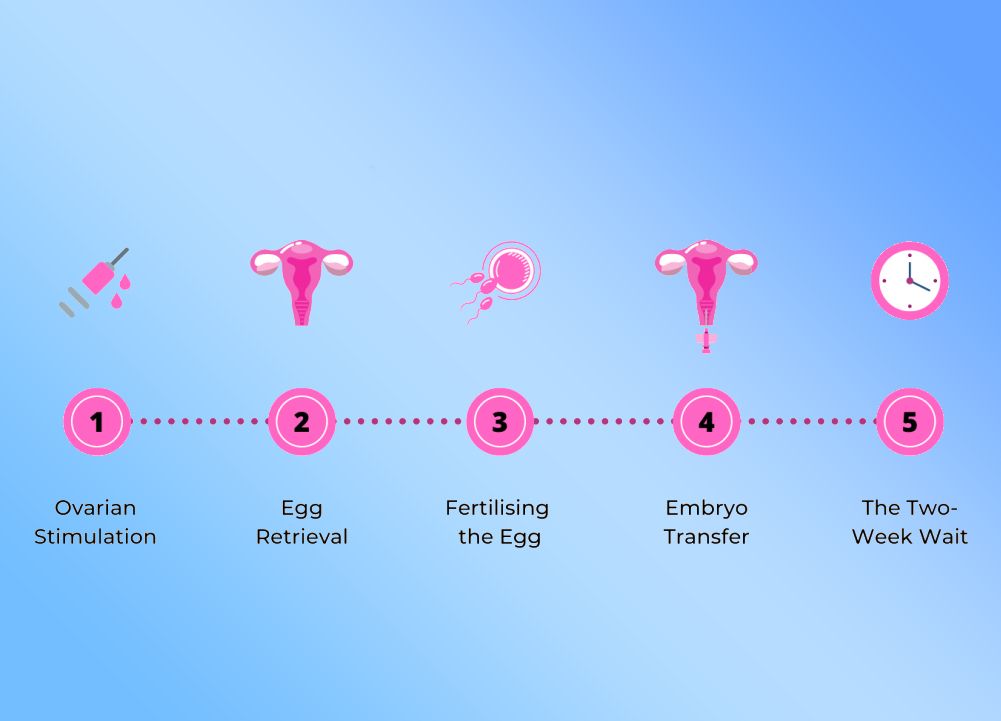We all have a basic knowledge about “In Vitro Fertilization”, which is commonly called as IVF. But IVF is more than just a procedure of fertilization by removing eggs, getting a sample of sperm and then manually combining both of them in a laboratory dish. An IVF process has its own specific steps, side effects, and benefits. Therefore, in this article, I will help you to grasp every knowledge about this assisted reproduction technology. Take a look!!!
What is IVF and Why is it Performed?
As said earlier, IVF is one of the types of assistive reproductive technology (ART). The process involves extracting eggs from a woman’s ovaries and then fertilizing them with sperm. The fertilized egg is called an embryo, which is then frozen for storage or else transferred to the uterus of a woman. IVF is performed depending on a person’s situation:
- your eggs and your partner’s sperm
- your eggs and donor sperm
- donor eggs and your partner’s sperm
- donor eggs and donor sperm
- donated embryos
Doctors also implant embryos in a gestational or surrogate carrier. Though the success rate of this process varies. Now that you know what it is, let’s know why is IVF performed? IVF process helps individuals with infertility who wish to have a baby. However, IVF is very expensive as well as invasive, thus couples normally go for other fertility treatments including taking fertility drugs or intrauterine insemination.
Following are the infertility problems for which In Vitro Fertilization are necessary:
- Reduced fertility in women above the age of 40
- Damaged or blocked fallopian tubes
- Decreased ovarian function
- Endometriosis
- Uterine fibroids
- Male infertility, like abnormalities in sperm shape or low sperm count
- Unknown infertility
Many couples also try IVF when they want to avoid the risk of passing a genetic disorder to their offspring.
 IVF
IVF Five Steps in the IVF
Following are the 5 basic steps that are involved in IVF:
Stimulation
Normally, a woman releases one egg during every menstrual cycle. But IVF needs many eggs as it will increase the possibilities of forming a viable embryo. An individual receives fertility drugs to multiply the number of eggs her body produces. Also, the doctor performs regular blood tests during this time as well as ultrasounds to examine the production of eggs to figure out when to extract them.
Egg Extraction
Egg extraction, also known as follicular aspiration, is a surgical process performed with anesthesia. A doctor uses an ultrasound wand to direct a needle through the woman’s vagina, into her ovary, as well as into an egg-containing follicle. Then this needle will suction eggs & fluid out of every follicle.
Also Read: PCOS IVF Treatment
Insemination
The male partner gives his semen sample. Then, a technician mixes the eggs with the sperm in a petri dish. If this does not form embryos, then the doctor may decide to try ICSI.
Embryo Culture
The doctor monitors the fertilized eggs to make sure that they are dividing as well as developing. At this time, the embryos can also undergo testing for genetic conditions.
Transfer
When the embryos become big enough, it means they are ready to be implanted. This step basically occurs 3-5 days after fertilization. Pregnancy happens when the embryo implants itself in the uterine wall and this will take 6-10 days.
 IVF
IVF Side Effects of IVF
Some of the common side effects after IVF includes:
- Passing a little amount of fluid ( clear/blood-tinged) after the procedure
- Mild cramping
- Mild bloating
- Constipation
- Breast tenderness
- Heavy vaginal bleeding
- Pelvic pain
- Blood in the urine
- A fever over 100.5 °F (38 °C)
Conclusion
Deciding whether to try IVF and is a complicated decision. As the emotional, financial, and physical factors of this procedure can be a bit difficult. Hence, you should speak to your doctor in the first place to know what is the best option and if IVF is the right way to have a baby. Seek the right counselor or group to help you as well as your partner throughout this process.
Also Read: Effect IVF Success Rate In India

